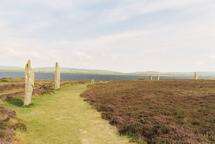New method reveals ancestry surprises

A statistical approach to studying genetic variation promises to shed new light on the history of human migration.
Scientists from the University of Oxford and University College Cork have developed a technique that analyses shared parts of chromosomes across the entire human genome.
The new method has already turned up some surprises including a strong Mongolian contribution to the genes of the Native American Pima people and gene flow from the north of Europe to Eastern Siberia. A report of the research appears in this week’s PLoS Genetics.
Previous methods have either concentrated on one part of the human genome (for example, just the Y-chromosome) or are based on ‘beanbag genetics’ - a greatly oversimplified model of heredity that ignores chromosomal structure completely.
‘Our technique enables us to identify more subtle details about genetic contributions than other methods,’ said Dr Garrett Hellenthal from the Department of Statistics at Oxford, a co-author on the paper. ‘By incorporating the inheritance of ‘blocks’ of DNA between generations, rather than just individual genes, it captures a panoramic view of the sharing of patterns of DNA across the entire human genome. This allows us to consider a vast number of possible colonisation scenarios - not just the ones people have already thought of - and use an algorithm to determine the most likely migration routes.’
The new technique was used to analyse 2540 genetic markers using Single Nucleotide Polymorphism data from 927 individuals of diverse ethnicity whose DNA was collected by the Human Diversity Project.
‘Humans like to tell stories and amongst the most captivating is the story of the global spread of modern humans from their original homeland in Africa,’ said Dr Daniel Falush of University College Cork, a co-author on the paper. ‘Traditionally this has been the preserve of anthropologists but geneticists are now starting to make an important contribution. However, genetic evidence is still typically analysed in the light of anthropological preconceptions; statistical techniques help us to see things more objectively.’
The researchers believe their method can cope with much larger datasets with over 500,000 genetic markers. Further developments of the technique should allow human ancestry to be reconstructed in unprecedented detail and give a perspective independent of anthropological theory and interpretation.
Source: Oxford University















